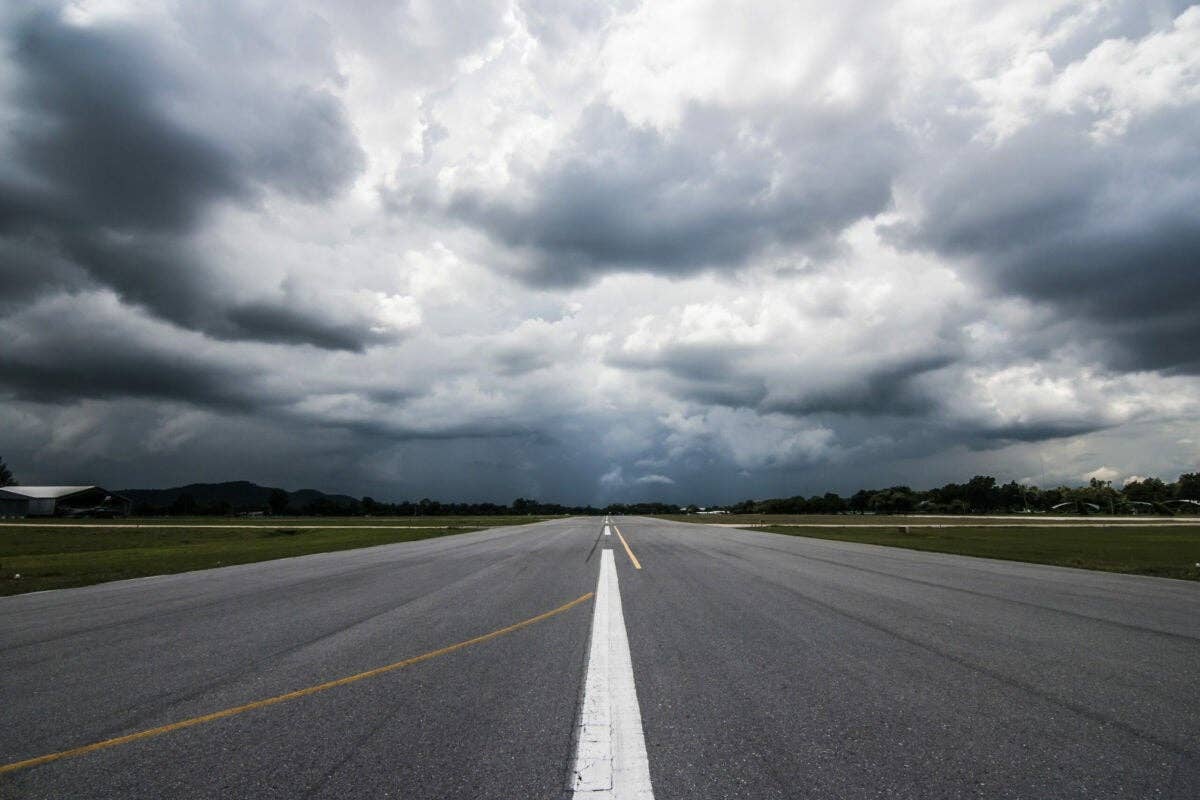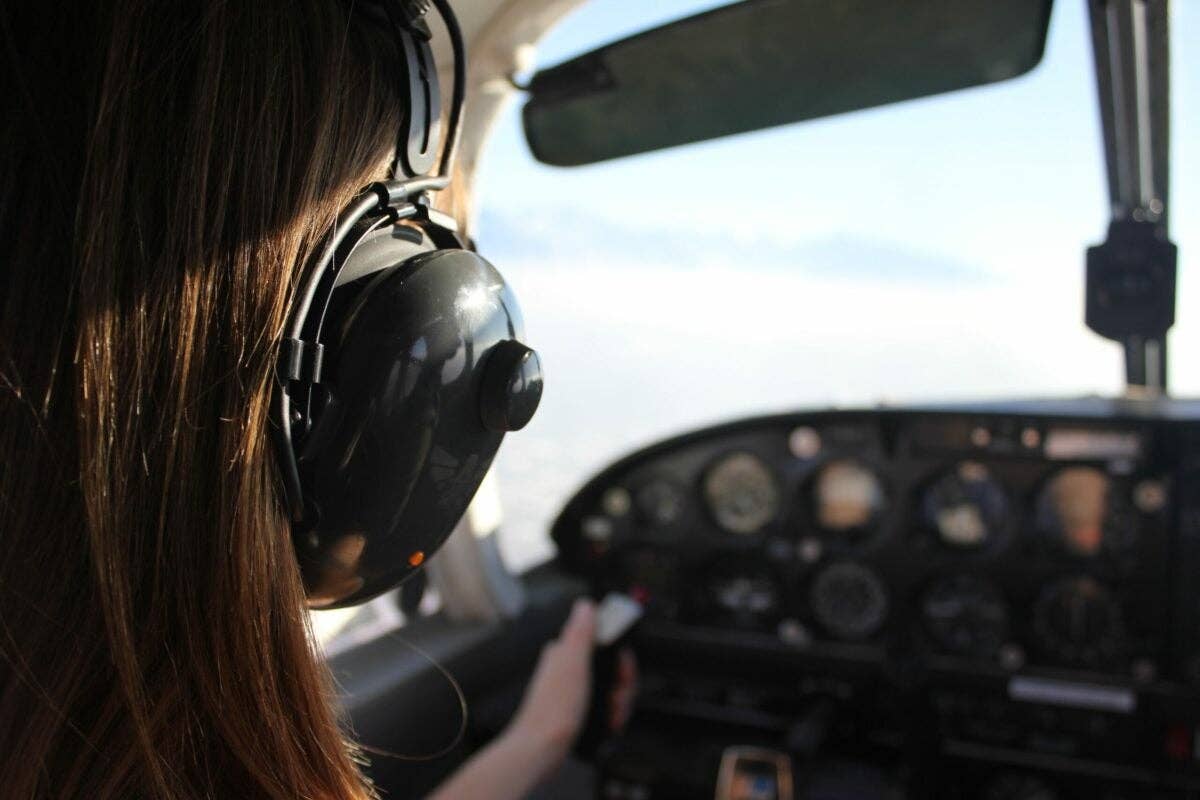
“There’s a thin line between jerk and genius — and you’re right on it, baby!” Barry Ross/BarryRossArt.com
Flying is the only magazine I subscribe to. I always make a point of reading each issue front to back, although sometimes out of order, and I'm always eager to read the stories in the I Learned about Flying from That column. Now I have my own story to tell of a recent adventure — or rather, misadventure — that involved flying a Piper Cherokee 140 to Brunswick, Maine, on business from my home airport in Groton, Connecticut. I learned many lessons on this flight.
The first was never to take a two-day forecast at face value. I had decided two days in advance against a morning departure for my trip because the forecast was bad. I noticed midmorning the day of my trip that the weather was great and would have permitted a morning departure if only I’d left earlier. I had succumbed to tunnel vision. As a result, I was stuck with my original plan of departing in the evening after an approaching cold front cleared the area.
I was feeling antsy when I departed Groton at around 5:30 p.m. I had planned for a handful of alternates in the days leading up to my flight. In the event I couldn’t make it to my destination of Brunswick Executive Airport (KBXM), which I knew had taxi service available until 1 a.m., I could land in Portland, Maine, and take a bus, cab or train (or rent a car). Another option would be to land in Auburn, Maine, and take a cab. I felt as though I was giving myself plenty of options.
Given my planning, and the fact that I expected a late arrival due to the weather, I wasn’t really surprised when ATC advised upon my handoff to Portland Approach that the weather at my destination was IFR. Being a non-instrument-rated pilot, I had to decline the controller’s offer for an IFR clearance. Since I’d planned for a potential stop due to weather anyway, I told the controller I’d land at KPSM in Portsmouth, New Hampshire, and wait for the weather to clear.
I’d landed at KPSM roughly a year earlier to attend a conference in York, Maine. I recalled that the folks at Port City Air were very friendly; I had even been given some complimentary pizza during my visit. Anyway, the TAF called for scattered clouds at 5,000 feet by 10 p.m., so my plan was to hang out at Port City Air until the weather improved — the FBO stayed open until midnight — and continue on my way. Since cab service was available until 1 a.m. in Brunswick, I knew I could touch own as late at 12:30 a.m. if necessary.
What actually happened is a different story, however. I settled in at the FBO in Portsmouth at around 7 p.m. Right after I did, I checked the train schedule and noted that if I could bum a ride from the FBO to the train station, I could catch a 7:45 p.m. train to my destination in Freeport, Maine. Confident in the forecast and feeling like I still had other options (such as diverting to Portland, Auburn or another VFR airport), I decided against taking the train.
As the time passed, the weather in Portland and Brunswick improved only marginally, and only for short periods of time. Conditions of half-mile visibility with overcast at 200 feet improved to 2 miles visibility with scattered clouds at 200 feet and broken at 5,000 feet before worsening to the original half mile with a ceiling at 200. Not good. I kept calling the ASOS and ATIS with my phone but to no avail. Conditions weren’t improving as I’d hoped they would as the hours passed.
As 10 p.m. came and went, I realized that the many options I thought I had were quickly shrinking. You can’t rent a car after hours, there were no more trains until 6 a.m. — I had to give a talk in the morning at 9:30 — and the cost of a cab ride would be astronomical. All the while, I kept remembering the warning of my grandfather (a pilot himself) about not succumbing to “get-there-itis.” Furthermore, I knew that as I waited I was only burning more energy and that I’d have to be careful not to let fatigue get the best of me. Adding to the supposed “need” to get there was that the company I work for had booked a hotel room for me in Freeport.
What I did next makes me think of one of my grandfather’s many sayings: “There’s a thin line between jerk and genius — and you’re right on it, baby!”
Channeling the advice of a flight instructor of mine who told me to always make sure you have an out, I decided to take off and “have a look.” With clear skies and 10 miles of visibility reported all the way to just south of Portland, I knew I’d be in the clear starting off and would see the weather before I got into it (courtesy of the full moon and light pollution surrounding Portland). My mindset was if I saw something I didn’t like, I could always turn around. Fuel wasn’t a concern either, as I had three-plus hours of gas on board.
My game plan was to get on top of any clouds, head to Brunswick, look down from a nice, safe altitude and, if things still didn’t look good, head to Auburn, which had been reporting 10-plus miles and clear skies for the past three hours while I sat on the ground in Portsmouth.
As I climbed to my cruising altitude over Portsmouth, I called Bangor Radio to open a flight plan and was advised that VFR flight was not recommended. It was at this moment that a small feeling of doubt I had before takeoff became a lot more pronounced. It was the feeling that I was living the start of an Aftermath column in Flying magazine.
I thanked the briefer for the information and told him I’d keep him posted and turn around if I saw anything I didn’t like.
As I approached Portland, which was operating IFR, I could see some clouds up ahead. At first they seemed to be broken, with gaps between them, but as I got closer they looked a lot more like a wall. It was as if the clouds had sliced Portland’s Class C airspace symmetrically in half from west-northwest to east-southeast and right down the center of the field. Five miles south of Portland and still in the clear, I entered a circling climb from 5,500 feet to 7,500, hoping I could get above the clouds. As I reached 7,500 feet, I realized the clouds were probably over 10,000 feet. Without an instrument rating, and with icing airmets calling for ice above 3,000 feet, I had no desire to tangle with these clouds. Furthermore, the weather at Auburn had dropped to 2 miles visibility. My “plan” turned out to be no plan at all.
Circling above Portland International at 7,500 feet, I called approach and asked if I could make a visual to Runway 36, explaining that the approach and the runway appeared clear of clouds and fog from where I was. The controller informed me that the field was IFR and asked if I wanted an IFR clearance. Again, I had to decline, but he informed me that they’d be closing in 15 minutes after the arrival of a JetBlue flight if I wanted to try then. I asked the controller if he could get a pirep from the JetBlue crew, and he said he could after it touched down.
So there I was, flying circles over Portland, burning a hole in my pocket and eating up time. Anticipating a good report, I started a circling descent to 4,500 feet. The captain of the JetBlue flight said he could see the runway from 5 miles out but passed through a cloud layer at 500 feet, adding that he didn’t recommend a visual approach.
Well, there it was, I knew I had been beaten. My life was worth more than an expensive cab ride. I thanked the approach controller for his help, patience and friendliness, telling him that it made my decision-making a lot easier. I took up a south heading toward Biddeford, Maine, and called Bangor Radio to amend my flight plan, adding 30 minutes to my time en route and telling them I was going to try for Biddeford Airport. I was so happy when the specialist automatically read me the notams, as I obviously didn’t have them on hand. Biddeford was the last place I thought I’d end up when I departed Portsmouth, but that’s where I went.
I landed in Biddeford at around midnight, cringing at the total Hobbs time on the rental airplane after shutting down. Two cab rides and $100 in cab fare later, I checked into my hotel in Freeport at 2 a.m., feeling utterly exhausted.
I credit a number of my "better" decisions that night to my reading Flying, particularly the I Learned about Flying from That and Aftermath columns. Flying keeps it always in my head that I am not invincible, and that the most experienced pilots can make devastating mistakes. I'd like to close by extending a heartfelt thank you to Peter Garrison and the rest of the folks at Flying for helping to make me a better, safer pilot.

Sign-up for newsletters & special offers!
Get the latest FLYING stories & special offers delivered directly to your inbox






